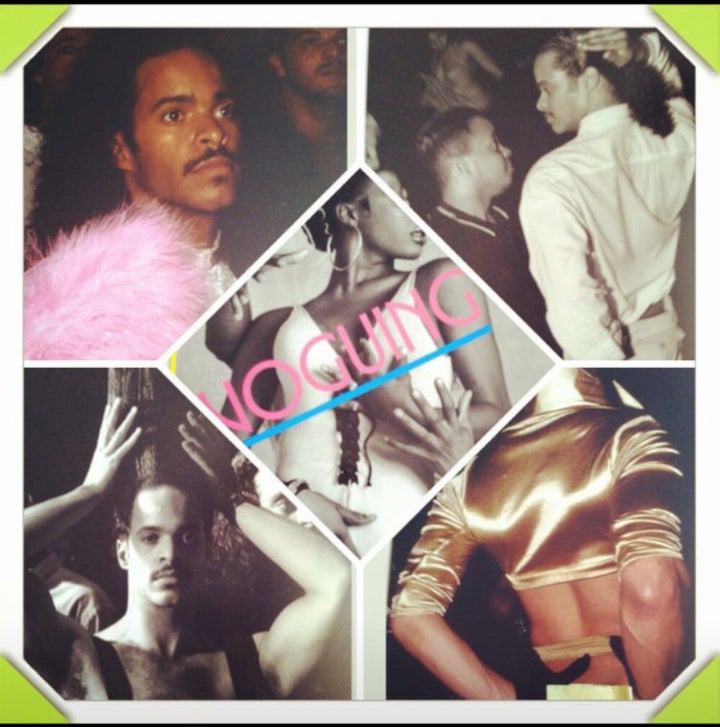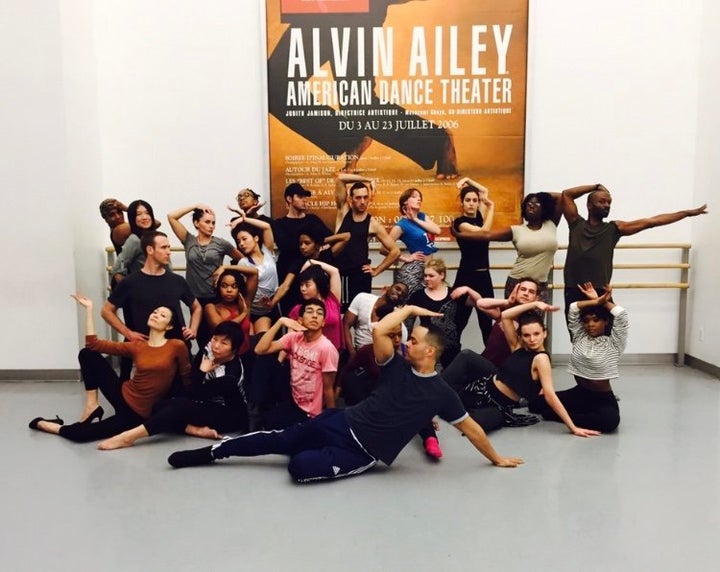In the 1980s the boroughs of New York City were best understood as bunkers. A concoction of fiscal crises, racial turmoil and a prolific drug culture had cast a pall on a city once confidently believed to be the roaring center of America’s economy.
New York’s queer culture was forged, in large part, under these conditions; the inability to comfortably exist in public according to one’s identity crowded many queer people out of “acceptable” society. The result, as is often the case in repressed cultures, was a wave of potent art reflective of that hurt, that frustration and that need for expression and belonging in a world insistent on your erasure.
Cesar Valentino discovered vogue in 1982 and became infatuated with the self-celebratory dance genre while frequenting balls and gay clubs throughout New York’s West Village and Lower East Side. Valentino joined the ranks of the craft’s most celebrated originators soon thereafter, developing namesake moves such as the Valentino Dip.
The style of dancing, in which participants revel in a series of poses as a fashion model might at the end of a runway, has been eagerly embraced in pop culture by everyone from casual dance enthusiasts to the queen of pop herself.
Since his first pose in 1983, Valentino has served as an ambassador for the art form, carrying it through the pages of magazines like Vanity Fair into the hallowed halls of the Alvin Ailey American Dance Theater’s academy, where he is an instructor, and across the internet, where the dance is immortalized in YouTube videos and GIFs by fans of all ages and walks of life.
HuffPost talked with Valentino about the origins of voguing, what it meant to the gay community at the time and how it feels to see an art form burgeon beyond its humble beginnings into an international phenomenon.

Can we start with you setting the stage? How did you even come across vogue in the 1980s?
My first time visiting the West Village was in 1982, and I’d seen people doing the movements and stuff, but I wasn’t really sure what it was, because I didn’t frequent there much. It wasn’t until 1983 that I really saw it a lot, because I was there frequently, and I saw people on the west side piers, which was where all the gay people hung out — it was a place to congregate, a safe haven. And I saw this dance. They were, like, fighting, but they were dancing, and I was like, “Wow, I’m getting it full force.” I was blown away. They were modeling, they were freeze-framing, but there was also some Egyptian cutting, some hieroglyphic undertones and martial arts, and I was blown away.
So naturally, I went home and practiced. I said, “Whatever this is — my friends tell me it’s vogue — I’ve got to learn the basic movements and what is the purpose behind them.”
Why did that resonate with you at that time? What was it that was going on in your life that drew you to that kind of art form?
What resonated for me was that this was a form of self-expression. Remember, this was the early 1980s, so we weren’t free to be openly gay, so this was really a place where people got together and were able to express ourselves. Many people had been relegated to the closet, whether in their neighborhood, on the subways or wherever. And this was a freeform, self-expressive dance that celebrated your individuality, your beauty and your attributes. It just made sense. In a world where we were kind of judged for these things, we’re given the opportunity to express them all through dance.
“This is not just a YouTube phenomenon or something we put on Facebook because it’s socially desirable. No, this is our lifestyle. This is our dance for survival.”
- Cesar Valentino
That’s kind of what I wanted to touch on as well, because obviously, the LGBT community at that time was repressed, and yet it conjured this art form that really is about showing yourself — presenting yourself to the world. It seems defiant in that way.
Absolutely. Again, it was this underground thing because it wasn’t something you could do anywhere and everywhere openly. And the concept that I loved so much about voguing was that we found a place where you could not only be yourself, but it gave people who in the real world probably wouldn’t be given a space to be these things — be models, designers, etc. — and allowed them to live that fantasy for a moment. Ballroom and vogue is an opportunity to live something that you probably wouldn’t be given an opportunity to do in the real world, at least not at that time. Now it’s more commercialized and popularized in music videos and so on, but then it was completely unheard of, and unless you were physically there, in the Village or in the gay clubs, you wouldn’t have even known it existed. Balls were very underground, private events.
Below: Cesar Valentino
What has it been like for you to see this art form you became acquainted with at its very intimate beginning explode into this global phenomenon? It’s obviously seen in a vastly different light now from when you started.
Over the years, of course, voguing has changed, and different styles were created, but I think conceptually vogue is vogue, and these categories were created to give people an opportunity to be able to participate. You know, these events were drag queen pageants, and then categories were created for gay boys to participate, and later came women, and they included lesbians, and categories really were about giving everyone an opportunity. I think what I’m trying to get at is that I’m OK with the global phenomenon and what vogue has become over the years, and this is not the first time I’ve experienced this ... There’s been a couple different surges in time, in the ’80s and ’90s, where it’s disappeared and it’s come back, but the fact that people have embraced it is an amazing thing.
Of course, a lot gets lost in translation because a lot of people don’t really know the history and don’t really know why we’re moving like this. This is not just a YouTube phenomenon or something we put on Facebook because it’s socially desirable. No, this is our lifestyle. This is our dance for survival.
Below: Cesar Valentino
Right. And I think a lot of people look at it very superficially and just become enamored with the aesthetic elements of vogue but may not appreciate the deeper meaning behind it.
Yeah, it’s a lot deeper than “OK, we’re going to throw our arms around, and the quicker you can slam your back on the floor, the better.” It’s kind of become that now — about the dramatics and about the feminine aspect, and I’m like, “Yeah, if we all vogue exactly the same, it kind of leaves very little room for any individuality.”
You know, back then, we created moves. Moves were created, and they were named after designer houses. I mean, there were quite a few moves that I created — the Valentino Dip, the Corkscrew. All these different moves that an individual would create, and it would be named after the person or the house, so I think a lot of that element has been lost because it’s really more about the simple five elements they refer to now, and you have to follow those guidelines. It leaves very little room for creativity and for people to create something that is their signature pose, move, spin or flip or whatever we did back in the ’80s. That’s the only thing I feel is kind of missing now. Not many people are gravitating toward the original style. Everybody’s more interested in what’s popular, which is more of a femme style.
Too much of anything is not a good thing, and I feel that when it’s saturated and the balls and the competitions become only about one thing, it kind of loses the purpose of why we do ballroom and vogue in the first place, which is to give everyone an opportunity to participate.
“I am one of the original people and one of the pioneers of this dance, and I’m still blessed to be here. I survived all of the things my peers didn’t.”
- Cesar Valentino
I understand. You’re saying you’re not really obsessing over the fanfare and the praise of it all?
That’s ego-driven. If you’re pressed by it, if you’re that concerned by it, if you’re worried about — and then we start getting into the whole race thing.
What do you mean by that?
People talk about how there are a lot of white people [voguing] and how people on the other side of the world are doing it. It’s counterproductive. It doesn’t matter what the race is. Listen to Madonna’s “Vogue” record, for example. It makes no difference if you’re black, white, a boy or a girl. People have their feelings about Madonna — Madonna did this, Madonna did that. Think what you want to, but the song clearly expresses that this is for anyone. Anyone can do this. This is a feeling. This is a movement, and it should be seen as such, versus “I need to have this. You can’t have this.” It becomes a kind of vogue and ballroom police of people who want to enforce these laws, rules and regulations. Why? That’s not the core value of where we started from or where we come from.
I hear you.
For me, at least. Because I think, based on my experience and my observations over the years, I am one of the original people and one of the pioneers of this dance, and I’m still blessed to be here. I survived all of the things my peers didn’t — drug abuse, violence, AIDS. That’s a testament to my survival, and I have to be in a positive place to tell people, “Look, if you live a clean life and you stay true to your values, you can do this too.”

Your ultimate goal is to push vogue as far out into the world as possible rather than maintain it as an exclusive art form, it seems.
Absolutely. I think it’s important to put it out there. This is not just a fad. This, for us, was a dance of survival, but it was also a social dance. How were we communicating back then? You know, if you didn’t have a rotary dial phone or you didn’t have coins to put in the public phone, you just made your way to these events. This was how we socialized. This was how we got together. There was always competition. There was always shade. That’s never going to go away. But this is how we come together. This is what brought us together.
That’s a profound way to explain that. Most of the time we’re exposed to voguing, we’re seeing it as this communal event, thinking about the performances taking place at that event, but not really thinking about the ways that event may be serving as a constant refuge in the way you described.
Absolutely. For example, I teach at different colleges, at seminars, at workshop series and panel discussions, and I discuss history and teach people the moves. Indiana University has invited me twice to be included in their African arts dance workshop that delves deeply into diaspora studies, diaspora dances and so on. And that’s a big deal, because this is a lot deeper than just “I’m fab, you’re not.” This is about a struggle, a survival, an experience and all these different elements. And for me, it’s very, very satisfying to be included and asked to participate in these things, because the educational aspect, for me, is so important rather than just the movement. Why are you moving? Do you understand the movement? What are you trying to achieve by these movements? A lot of people can’t answer that question.
Sure. They might be inspired by the motion of it all but not the emotion.
Exactly. “Ooh, it’s fun.” No, it’s deeper than that. What is your body telling me? Tell me a story through your vogue. Tell me who you are. Tell me what it is that makes you stand out from the rest. This is part of what we did in the ’80s. We created a signature style, signature moves, different feelings and nuances that made people think, “I get what he’s trying to say.” There’s too many clones out there. We’ve got enough of that. We need to stand out, you know?
“Tell me a story through your vogue. Tell me who you are. Tell me what it is that makes you stand out from the rest.”
- Cesar Valentino
Do you ever take a moment to sit back and appreciate the fact that this art and these moves you conjured in your own mind are now being taught in some of the most esteemed dance schools in the world?
I’m in such a place of humility. I wake up every day grateful for another day. I’m a survivor, and I’m blessed to still be here. I think what keeps me going is the fact that I have these opportunities to teach. That Ailey believed in me enough to say, “We want you here. We trust your history.” To me, that’s what I want. But yes, I’ve had a moment or two where I’ve said, “This is deep.” And this is a huge responsibility, and I thank God for that blessing and that opportunity to share my story, my experience and my challenge.
